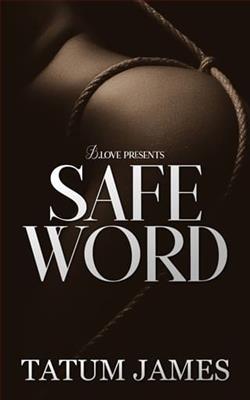Page 52 of Last Girls Alive
“Yes, I saw that. What do you mean, though? Like ripped out?”
“It appears that way.”
Katie thought about it. “Maybe the killer took it as a keepsake or trophy?”
“Could be,” he said.
“Okay, now for the $64,000 question,” she said.
“The carvings on their backs.” He moved to another computer and with impressive speed brought up several files. One graph showed sharp spikes up and down while the other showed percentages of chemicals—both natural and manmade.
Katie watched with extreme interest.
“Okay, we were able to get enough to test what the ink was made of and to determine it wasn’t premade or a common type of ink tattoo, or otherwise; it was actually a concoction that was homemade with a few unexpected ingredients.”
Katie was completely intrigued and waited patiently.
“We tested in a couple of places from both victims. It revealed that sometimes the ink was stronger and then weaker in its mixture.” Clicking to another open window, “Here’s the list of the main ingredients: part linseed and soybean oil, mixed with pigments of black henna and oxide to obtain a rust color, with raw materials of equal portions of benzene, ethylene, and propylene.”
“Isn’t that similar to what’s in standard writing ink?”
“Some of it with the manmade oils and various pigments, which makes different hues and adds a type of preservative to keep the colors.”
“What if he used an old-fashioned pen—the kind that you dip into a small jar of ink.”
“It’s possible.”
“A nib that’s flat with sloped sides that holds the ink—similar to a quill,” she said.
John changed photos and stopped on three photos of the victims’ carved backs stained with ink. Each photo was taken from a different distance. The close-up one he magnified on the screen. “You can see that there are varying levels of depth—but the writing style is consistent with both victims. You can see the tail on thegs andes. This was done freehand and it’s quite competent, but it still leaves little craters here and there, based on pressure and hesitation. It would be impossible to keep the pressure exactly the same, free-handed. I would have to say it was written by the same person.”
Katie leaned in and studied the photos. It was amazing to see details through twenty-four to fifty magnification. Each stroke resembled a peak or valley with a streaked dark substance running through it. It made her think of the crime-scene locations with the trails and views of stunning landscapes. “It’s difficult to imagine anything else making that cut. Would a thick knife or ice pick give that same result?”
“That I cannot give a conclusion on and there’s no way of testing for accuracy.”
“Dr. Dean said that the Harlan victim was written on post mortem.”
“Now we’re getting into more of the psychological aspect of the evidence—and that, detective, is your territory.”
Smiling, she said, “Well, it never hurts to ask, does it?”
“Oh, by the way.” John interrupted her many contemplations.
“Am I forgetting something?” she said.
“An interesting tidbit.”
“From the killer?” she said, hoping that was the case.
“The letters were all written in a standard style of calligraphy—a bit crude but a good effort—like when someone buys a beginner calligraphy set.”
Twenty-Four
Thursday 1925 hours
Rain tapped on the roof of the car, keeping a distinct tempo as Katie sat waiting for McGaven to arrive before going into The Well to talk with Hugh Keller, ex-deputy sheriff, who was now a managing bartender at the dive bar. She wondered when he had last had contact with Shelly McDonald.
Katie’s nerves buzzed with a strange energy. She glanced at her watch again, willing it to tell her something else: McGaven was running late. He had to attend a patrol meeting since he was still active on patrol one to two shifts a week.















